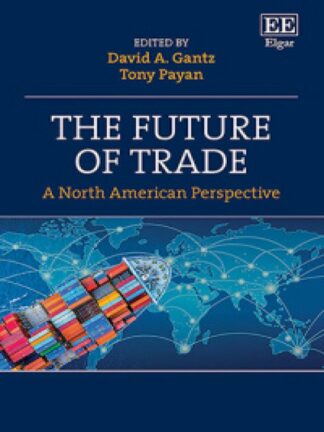Descripción
The general aim of this volume, as its title indicates, is to present and discuss current empirical, pedagogical and technological approaches to the acquisition and teaching of non-native (second -L2, third -L3) languages in the context of the multicultural society in which we are immersed. Learners are the protagonists of the volume in that the various chapters focus on the non-native language learning and non-native language teaching principles, mechanisms and processes that lead them to acquire and use a language other than their native language or L1. A clearly innovative aspect of the volume is the fact that it deals with learners that come from all walks of life, as there are foreign and second language learners, third language learners, simultaneous and sequential bilinguals, immigrant speakers, heritage speakers and speakers of minority languages. The volume offers a multicultural perspective in that the learning and/or teaching accounted for by the various chapters takes place in different geographical areas, in different communities and in either natural or institutional settings.
The linguistic dimension of that multicultural perspective is the many languages that are described, analysed and compared, be it as target (L2 or L3) or as source (L1) languages. This linguistic dimension is further enriched by the fact that there are chapters dedicated to the various areas of language, which implies that in some cases we gain an understanding of how syntax is acquired and taught while in other cases the object of inquiry is the sound system or the morphological and discourse patterns of the target and the source languages. One more appealing aspect of the volume pertains to the variety and topicality of the methodological approaches used by the various researchers, as they go from the use of surveys or the analyses of corpus data and offline experimental tasks to the employment of eye-tracking experimental tasks or the description of electrophysiological techniques.
Parte I. ADQUISICIÓN DE LENGUAS NO NATIVAS: FONÉTICA, MORFOLOGÍA, SINTAXIS, DISCURSO Y LÉXICO / NON-NATIVE LANGUAGE ACQUISITION: PHONETICS, MORPHOLOGY, SYNTAX DISCOURSE AND THE LEXICON
Capítulo 1. La pausa y el «acento extranjero»: patrones prosódicos en aprendientes de ELE: descripción y análisis de la interlengua de aprendientes italófonos de nivel C1/C2
Capítulo 2. Los compuestos nominales en español L3
Capítulo 3. Ambiguous relative clause modifier attachment in code-switched constructions: evidence from eye tracking
Capítulo 4. Emocionalidad en narrativas autobiográficas: análisis del vocabulario y otros recursos lingüísticos en la producción oral de aprendices sinohablantes de español
Parte II. LENGUAS DE MIGRACIÓN, LENGUAS DE HERENCIA Y LENGUAS MINORITARIAS / MIGRANT LANGUAGES, HERITAGE LANGUAGES AND MINORITY LANGUAGES
Capítulo 5. Aculturación emocional en hablantes de español como lengua de herencia: adaptación del emotional patterns questionnaire y diseño del cuestionario de experiencias emocionales
Capítulo 6. Factores afectivos, identidad patrimonial y discriminación étnica en el rendimiento universitario de estudiantes europeos con español de herencia
Capítulo 7. Relevancia académica de la presentación oral en contextos multiculturales: análisis contrastivo de la interacción en el discurso oral formal de hablantes de herencia de español y estudiantes de ELE estadounidenses
Capítulo 8. Technology-enhanced learning (TEL) in the LESLLA context
Capítulo 9. Plurilingüismo y educación: una aproximación a la educación plurilingüe desde la perspectiva de las lenguas minorizadas
Capíutlo 10. La lengua árabe en España: entre la disociación y la integración
Parte III. MÉTODOS EN LA ADQUISICIÓN Y ENSEÑANZA DE SEGUNDAS LENGUAS / METHODS IN SECOND LANGUAGE ACQUISITION AND SECOND LANGUAGE TEACHING
Capítulo 11. How to do research in SLA by combining corpus and experimental methods: an introduction for language researchers and teachers
Capítulo 12. What electroencephalogram studies tell us about the teaching of second languages
Capítulo 13. La técnica de pensar en voz alta como herramienta docente y de investigación en estrategias de aprendizaje para la comprensión auditiva
Capítulo 14. Noun-noun compounds in a game task: what child data can tell us about teaching practices
Capítulo 15. Teacher perceptions and student interaction in online and hybrid university language learning courses
Rudolf von Stammler
Profesor en la Universidad de Berlín
Rudolf Stammer, (1856-1930) Filósofo y jurista alemán, profesor en Marburgo, Giessen, Halle y Berlín, está considerado como uno de los filósofos del derecho más influyentes de la historia. »Investigador eminente y maestro ejemplar, puede mirar con orgullo el vasto campo removido y sembrado por su labor infatigable. Acaso no se agrupe en derredor de él una escuela stammleriana , una de esas coteries tan frecuentes por desdicha en el mundo de la ciencia, con el ritual y la liturgia de las confesiones, y el incienso de las capillas, y la fe ciega de las mesnadas en las dotes carismáticas del jefe.











